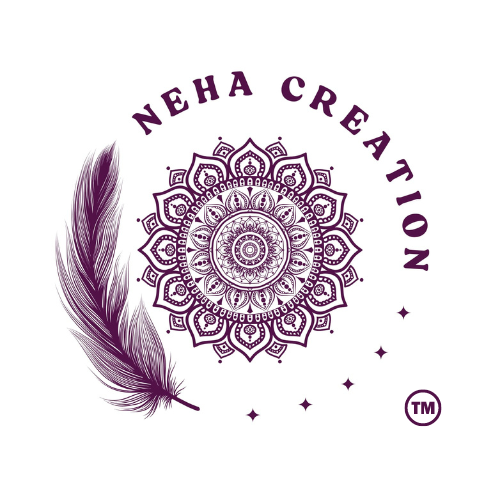Introduction to Vedic Mandala
The term Vedic Mandala refers to a sacred geometric design derived from the ancient Vedas—the oldest spiritual texts of India. In Sanskrit, “Mandala” means “circle,” symbolizing wholeness, unity, and the infinite nature of the universe. In the Vedic tradition, mandalas serve as a powerful spiritual tool used for meditation, rituals, and divine connection.
The Vedic Mandala is not just an art form; it’s a spiritual diagram believed to reflect the cosmos, the self, and the divine energy that flows through everything. These mandalas have been used for thousands of years in yagnas (sacred fire rituals), mantra chanting, temple architecture, and more.
Origins of the Vedic Mandala
The roots of Vedic Mandala can be traced back to Rigveda, one of the four sacred Vedas. The Rigveda itself is divided into ten "mandalas," each a collection of hymns dedicated to various deities like Agni (fire), Indra (king of gods), Varuna (god of cosmic order) and others. Here, the term “mandala” was first used to represent a structured spiritual composition.
From these literary mandalas, the concept expanded into visual representations, becoming circular diagrams used for spiritual awakening and divine focus.
Meaning and Symbolism of Vedic Mandala
Each element in a Vedic Mandala carries deep symbolic significance. At its core, the mandala represents the universe. The central point (bindu) symbolizes the source of creation, from which everything expands. The surrounding layers, often geometric patterns of squares, triangles, and circles, represent different dimensions of reality, elements, and cosmic forces.
Key Symbolic Elements in Vedic Mandalas:
-
Bindu (Center Point): The source, the divine, pure consciousness.
-
Lotus Petals: Purity, spiritual awakening, and detachment from worldly desires.
-
Circles: Eternity, wholeness, and the cyclical nature of life.
-
Triangles: Masculine (upward) and feminine (downward) energies.
-
Squares: Earth element, physical world, and balance.
These symbols combine to create a cosmic map, guiding the seeker toward spiritual enlightenment.
Types of Vedic Mandalas
There are several types of mandalas used within Vedic practices, each serving a unique spiritual purpose:
1. Deity Mandalas
Created for invoking and meditating upon specific Hindu deities such as Shiva, Vishnu, Lakshmi, or Durga. Each deity’s mandala is designed with sacred geometry and specific colors, mantras, and symbols related to that deity.
2. Yagna Mandalas
Used in fire rituals (yagna), these mandalas are drawn using rice flour, turmeric, and other sacred powders on the ground to purify the space and attract divine energies.
3. Yantra Mandalas
Closely related to Vedic Mandalas, Yantras are geometric diagrams used in Tantric practices. One of the most famous yantra mandalas is the Sri Yantra, symbolizing cosmic energy and the union of the divine masculine and feminine.
4. Astrological Mandalas
Used in Vedic astrology (Jyotish), these mandalas represent planetary movements, constellations, and their influences on human life. They’re used for chart readings, predictions, and spiritual alignment.
How Vedic Mandalas are Created
Creating a Vedic Mandala is considered a spiritual act. Traditionally, they are drawn by monks, priests, or spiritual artists who enter a meditative state before beginning. The process involves:
-
Purification of the space
-
Chanting of Vedic mantras
-
Drawing the base geometry using compasses and rulers
-
Filling the design with symbolic colors, shapes, and patterns
-
Often, natural materials like rice flour, colored sand, or herbs are used
This sacred process transforms the mandala into a living field of energy that can enhance spiritual practices and healing.
Spiritual Benefits of Vedic Mandalas
Using Vedic Mandalas in your daily life or meditation practice offers a range of spiritual and psychological benefits:
1. Meditation and Focus
The symmetrical design helps quiet the mind and center your focus. Gazing at the mandala during meditation can lead to deep states of mindfulness.
2. Spiritual Connection
Mandalas act as spiritual gateways to connect with deities, higher consciousness, and universal energy.
3. Emotional Healing
The use of color, symmetry, and sacred symbols has a calming effect on the nervous system, promoting peace and emotional balance.
4. Chakra Alignment
Specific Vedic Mandalas correspond to the seven chakras, helping balance energy flow and promote physical and spiritual well-being.
5. Sacred Space Activation
Placing a Vedic Mandala in your home, studio, or altar space can help create a positive energy field, perfect for spiritual practices.
Vedic Mandala in Modern Times
Today, Vedic Mandalas are finding a resurgence among spiritual seekers, yoga practitioners, artists, and interior designers. You can find these mandalas on:
-
Canvas wall art
-
Yoga mats and clothing
-
Meditation journals
-
Online mandala courses
-
Tattoo designs
-
Spiritual home décor
They are also widely used in art therapy and mindfulness workshops for stress reduction and self-discovery.
Conclusion
The Vedic Mandala is more than a design—it’s a divine instrument of transformation, rooted in the ancient Vedic wisdom of India. Whether you're a spiritual seeker, an artist, or someone looking to find inner peace, incorporating Vedic Mandalas into your life can help you align with your highest self and the universe.
By understanding its deep meanings, symbolism, and benefits, you can tap into the power of this sacred art and experience spiritual awakening through every line, curve, and color.

